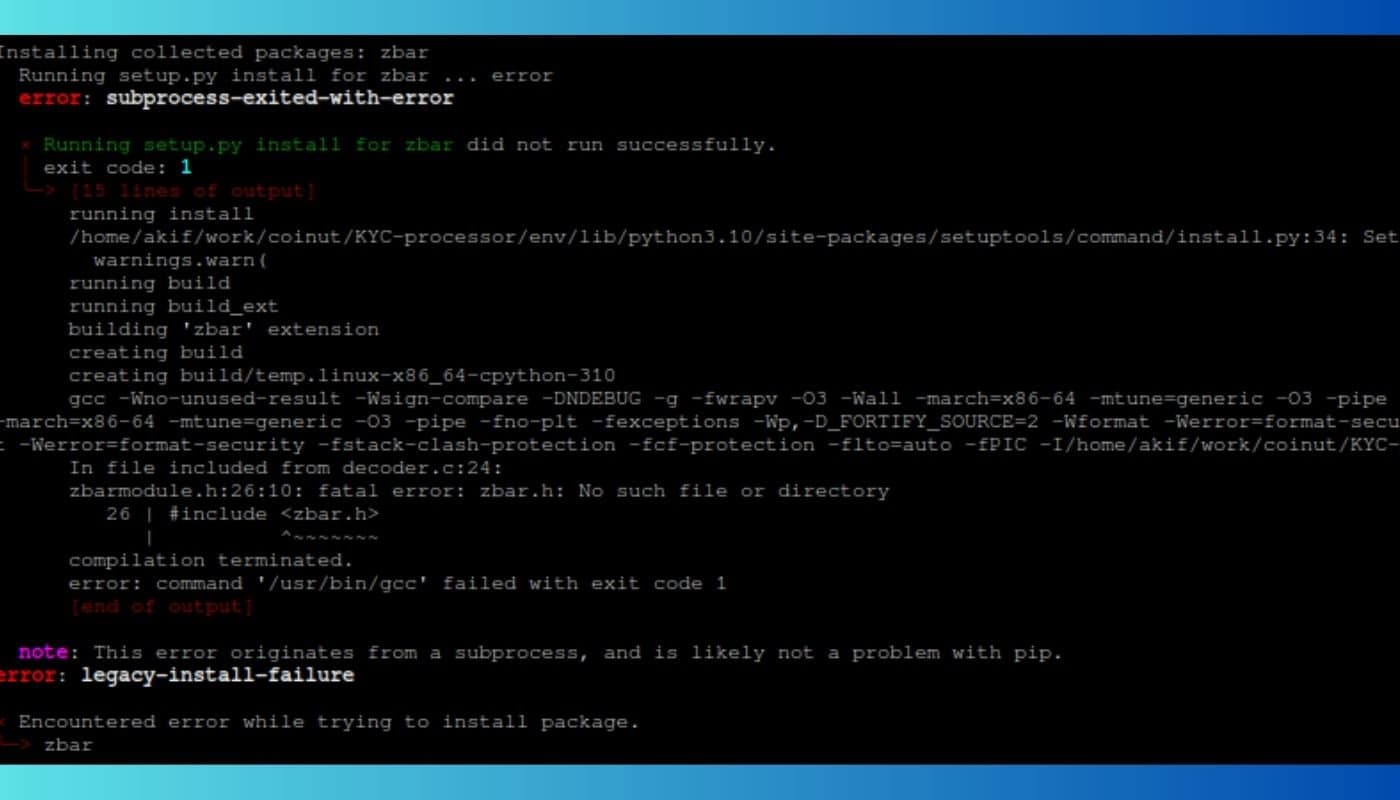When working with Python and using the pip install command to add packages, you might come across the “error: legacy-install-failure.” This error often arises because the package you're trying to install isn't compatible with your Python version.
What is the “error: legacy-install-failure” error?
 This error message pops up when you're using pip install to install a Python package, and it indicates that the installation has failed due to compatibility issues between the package and your Python version.
This error message pops up when you're using pip install to install a Python package, and it indicates that the installation has failed due to compatibility issues between the package and your Python version.
Common reasons for this error include outdated build tools, package name changes, missing developer tools on macOS, or the absence of Microsoft C++ Build Tools on Windows.
How to fix Python's “error: legacy-install-failure”
To resolve this issue, consider these steps:
- Upgrade pip and other build tools: Ensure your pip, setup tools, and wheel packages are up-to-date with these commands:
pip install –upgrade pip
pip install –upgrade setuptools wheel - Check for package renaming: Sometimes, the package you want to install might have a new name. Check the error output for hints about the new name, and use it in the pip install command if necessary.
- For macOS users: Make sure you have an active developer path by installing Xcode Command Line Tools:
xcode-select –install - For Windows users: Install Microsoft C++ Build Tools if you encounter a “Microsoft Visual C++ 14.0 or greater is required” error. Follow these steps:
- Download the appropriate version from the Microsoft Visual Studio website.
- Install the build tools, selecting the Python development workload during installation.
- If you have Visual Studio installed, activate the Python development workload from the “Tools > Get Tools and Features” menu.
- Check for a wheel distribution: If the previous solutions don't work, download the wheel distribution of the package from pypi.org. Follow these steps:
- Go to the package's page.
- In the “Files” section, find the suitable wheel distribution for your operating system.
- Download the .whl file.
- Navigate to the directory with the wheel file and run:
pip install package-name.whl
Replace “package-name” with the actual package name.
If you're stuck, consider getting Python coding homework help from experienced experts who can guide you through tricky errors.
In conclusion, the “error: legacy-install-failure” error in Python often results from compatibility issues. By following these steps, you should be able to resolve the error and successfully install your desired package. Happy coding!




